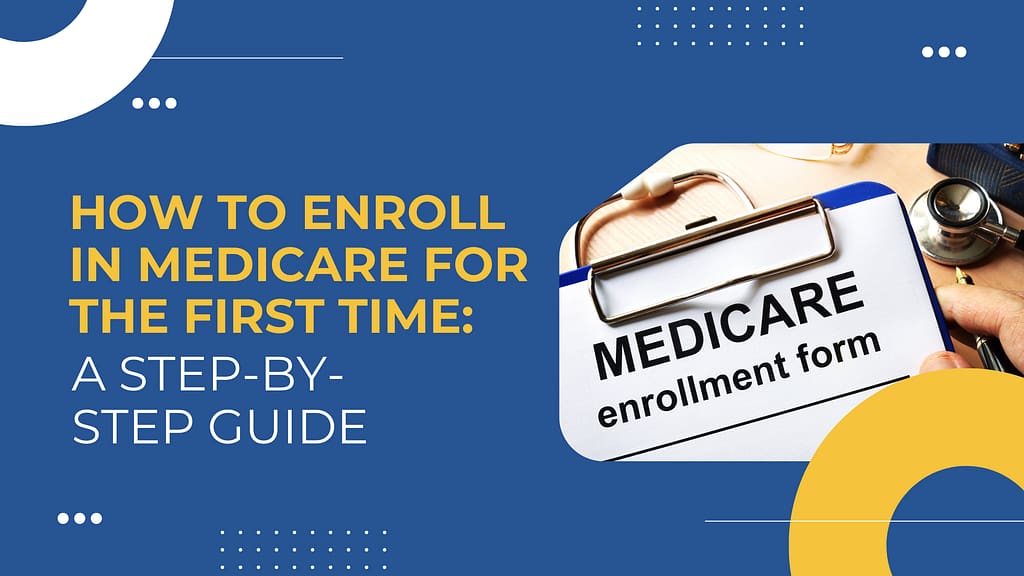Introduction
Enrolling in Medicare for the first time can feel daunting, but it doesn’t have to be! Whether you’re turning 65 or meeting eligibility requirements due to a disability, you must understand the steps to enroll in Medicare to get the coverage you need. In this guide, we’ll break down the enrollment process step by step.
As you approach retirement age, navigating the complexities of Medicare can feel daunting. Enrolling in Medicare for the first time plays a crucial role in ensuring you get the healthcare coverage you need during your golden years. This comprehensive guide’ll walk you through the step-by-step process of enrolling in Medicare for the first time, helping you make informed decisions and avoid potential pitfalls.
Understanding Medicare Eligibility
Before we dive into the enrollment process, let’s briefly review the Medicare eligibility requirements:
- Age 65: If you’re a U.S. citizen or permanent legal resident who has lived in the United States for at least five consecutive years, you’re eligible for Medicare when you turn 65.
- Disability:
If you’re under 65 and have received Social Security or Railroad Retirement Board disability benefits for at least 24 months, you may qualify for Medicare.
- End-Stage Renal Disease (ESRD): If you require dialysis or a kidney transplant for ESRD, you may be eligible for Medicare, regardless of your age.
Step 1: Determine Your Medicare Part Enrollment
Medicare coverage includes different parts, each offering specific benefits and requiring separate enrollment. The main parts are:
- Part A (Hospital Insurance): Covers inpatient hospital stays, skilled nursing facility care, hospice care, and some home health care.
- Part B (Medical Insurance): Covers outpatient services, preventive care, doctor visits, and durable medical equipment.
- Part D (Prescription Drug Coverage): Provides coverage for prescription medications.
Depending on your situation, you may be automatically enrolled in Parts A and B or need to enroll actively. If you’re not automatically enrolled, you can sign up during your initial enrollment period, which begins three months before your 65th birthday and ends three months after.
Step 2: Gather the Necessary Documents
To enroll in Medicare, you’ll need to provide the following information and documents:
- Personal Information: Your name, date of birth, Social Security number, and contact information.
- Medicare Card: If you’re automatically enrolled, you’ll receive your Medicare card in the mail. If you need to enroll, you’ll receive your card after your enrollment is processed.
- Proof of Citizenship or Legal Residency may include a birth certificate, passport, or green card.
- Employment and Insurance Information: Details about current or previous employer-provided health insurance coverage.
Step 3: Enroll in Medicare
There are several ways to enroll in Medicare for the first time:
- Online: You can enroll in Medicare through the Social Security Administration’s website at www.ssa.gov.
- By Phone: Call the Social Security Administration at 1-800-772-1213 (TTY 1-800-325-0778) to enroll over the phone.
- In Person: Visit your local Social Security office to enroll in person.
During enrollment, you’ll need to provide the information and documents gathered in the previous step. Be prepared to answer questions about your employment and insurance history, as this will help determine your Medicare coverage and potential costs.
Step 4: Understand Your Medicare Coverage and Costs
Once your Medicare enrollment is complete, it’s essential to understand the coverage and costs associated with your plan:
- Medicare Part A and Part B Costs: Part A is typically premium-free if you or your spouse has paid Medicare taxes for at least 10 years. Part B has a standard monthly premium, which can be higher depending on your income.
- Medicare Advantage (Part C): If you choose to enroll in a Medicare Advantage plan, you’ll need to understand the plan’s network, copays, and deductibles.
- Medicare Part D Costs: Part D plans have monthly premiums, annual deductibles, and copays or coinsurance for prescription drugs.
Review your Medicare coverage options carefully and consider your healthcare needs, budget, and preferred providers to select the best plan.
Step 5: Explore Supplemental Insurance Options
Medicare provides comprehensive coverage, but it may not cover all your healthcare expenses. Consider enrolling in a supplemental insurance plan, a Medigap policy, to help fill coverage gaps. Private insurance companies offer Medigap plans and help pay for out-of-pocket costs, such as deductibles, copays, and coinsurance.
Conclusion
Enrolling in Medicare for the first time can be a complex process, but the right information and guidance will help you navigate it with confidence. When you understand your eligibility, gather the necessary documents, and explore your coverage options, you ensure that your healthcare needs are met during your retirement years.
Remember, if you have any questions or need assistance throughout the enrollment process, contact the Social Security Administration, your state’s health insurance assistance program, or a licensed Medicare insurance agent. They provide personalized guidance and help you make informed decisions about your Medicare coverage.


